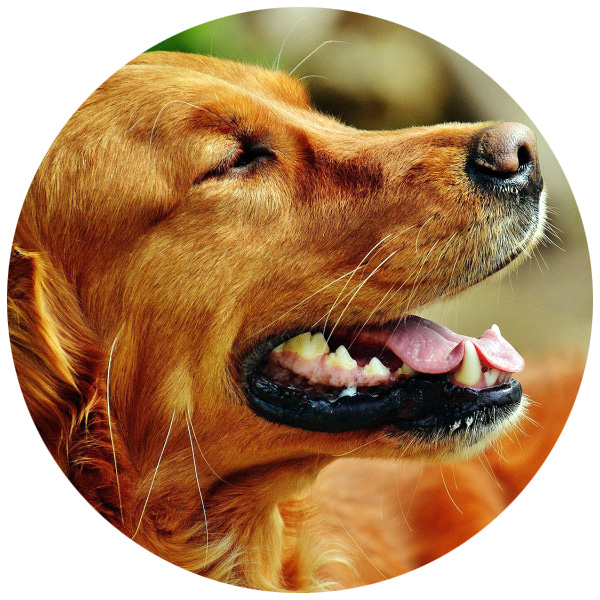Diseases in dogs
The most common diseases in dogs.
Many of the diseases typical in dogs today affect the joints, spine, mouth, nervous and immune systems, and the gastrointestinal tract. Although dogs are naturally robust animals, factors such as overbreeding, inappropriate housing, and an unbalanced diet have contributed to the high prevalence of certain diseases today. Joint problems, in particular, are high on the list.
Joint diseases in dogs:
Arthritis – joint inflammation
A common disease characterized by inflammatory processes in the joints. It can be caused by bacteria, rheumatism, or fungi. Initial symptoms such as lameness, sensitivity to pain, or reluctance to move are often only noticed in the advanced stages. Further information can be found at: Arthritis in dogs
Osteoarthritis – joint wear
This degenerative disease is caused by the breakdown of joint cartilage. If this condition is left untreated, bone wear, stiffness, and chronic pain can result. Affected dogs often exhibit limited mobility and a loss of quality of life. Further information at: Osteoarthritis in dogs
Hip dysplasia (HD)
A misalignment of the hip joint, usually congenital or caused by breeding. It leads to instability and, over time, to painful joint wear. Typical symptoms include difficulty standing up, reduced jumping power, or a “waddling” gait. Further information at: Hip dysplasia in dogs
Patella luxation
This is when the kneecap pops out of its socket. Small breeds are particularly affected. The disease can be genetic or caused by weakened muscles and worn cartilage structures. Symptoms include hopping on three legs, unsteadiness when walking, or sudden movement blockages. Further information can be found at: Patella luxation in dogs
Spinal diseases
Spondylosis
An age-related or breed-related ossification of the spine in which bony outgrowths develop. These can constrict nerves and cause pain. In severe cases, paralysis, tremors, incontinence, or coordination problems can occur. Further information at: Spondylosis in dogs
Diseases of the nervous system
Incontinence
Can be caused by nerve disorders, age-related weakness, the consequences of castration, or spinal diseases such as spondylosis (spondylosis deformans) or intervertebral disc problems. Affected dogs lose urine or feces uncontrollably, often unnoticed while lying down or sleeping. Further information at: Incontinence in dogs
Degenerative myelopathy
A progressive disease of the spinal cord that primarily affects large breeds. Initial signs include unsteady gait, dragging of the hind legs, and muscle atrophy. Over time, the front legs, breathing, and swallowing can also be affected.
Dementia
Like humans, dogs’ mental performance can decline with age. Typical symptoms include disorientation, altered social behavior, sudden barking, restlessness at night, or forgetfulness in everyday routines.
Mouth & Teeth
Bad Breath
Often caused by bacteria in the mouth, often in combination with tartar, poor diet, or poor oral hygiene. Depending on the breed, small dogs with crowded teeth are more frequently affected. Bad Breath in Dogs
Tartar and Plaque
Hard deposits on the teeth can lead to inflammation, tooth loss, and even organ damage. The causes are usually poor quality feed, genetic predisposition and lack of ZDental care. Further information at: Tartar in dogs
Gastrointestinal tract
Food intolerances and digestive problems such as soft stools or diarrhea are very common. They can be triggered by food intolerances, parasites (e.g., Giardia), bacteria (e.g., Helicobacter pylori), antibiotics (medications), or stress. It is important to investigate the causes and specifically rebuild the intestinal flora.
This overview does not replace a veterinary diagnosis. In case of noticeable symptoms, a veterinarian or experienced animal health practitioner should always be consulted. Detailed information on the individual clinical pictures can be found on the linked subpages.
